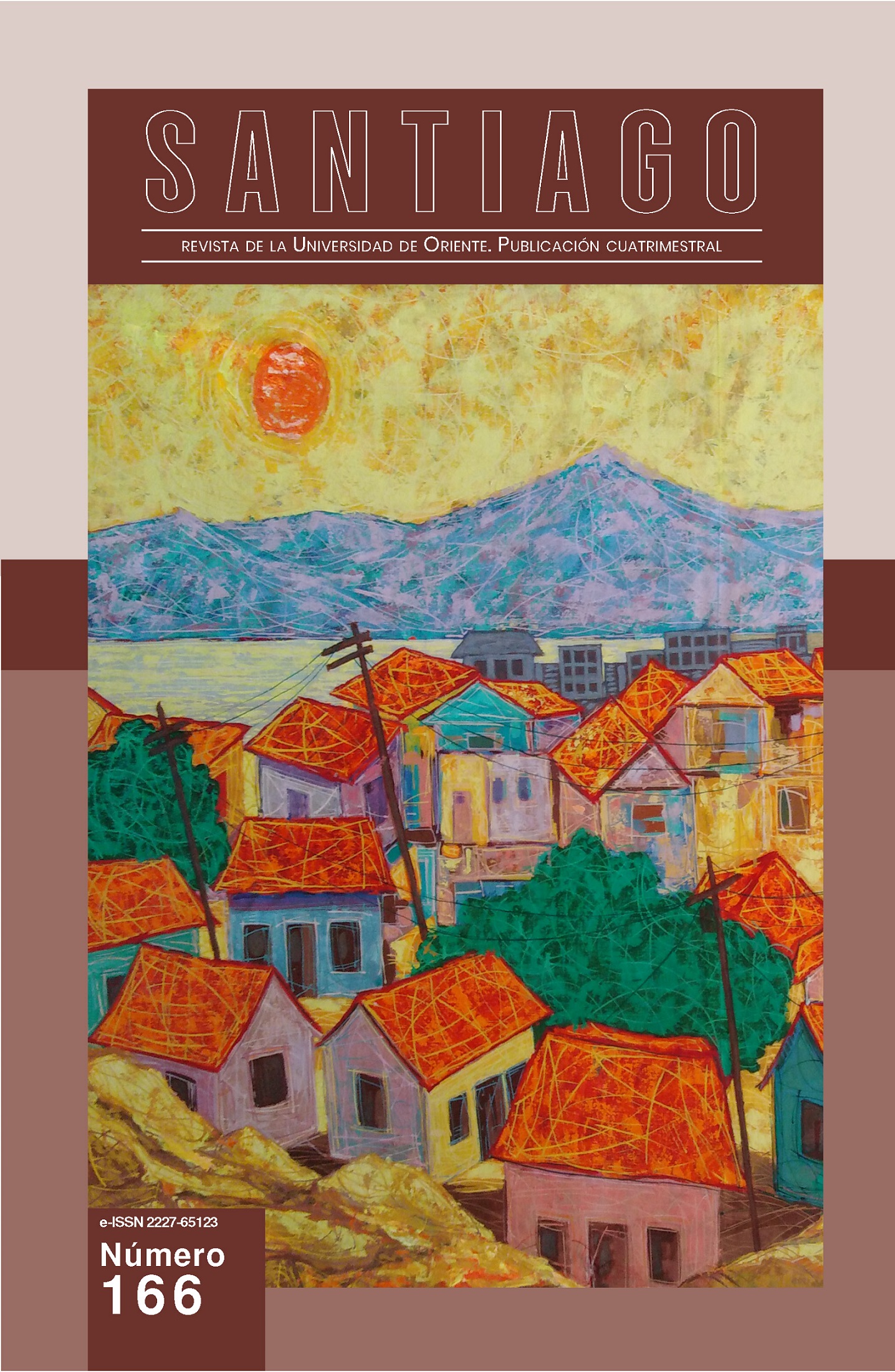Gestión integral de la seguridad hídrica: diagnóstico, desafíos y alternativas multisectoriales para un uso sostenible del recurso
Palabras clave:
Seguridad hídrica, gestión multisectorial, escasez de agua, gobernanza sostenibleResumen
La investigación tuvo como objetivo analizar la situación hídrica del departamento de Ica (Perú), identificando los factores que agravan la escasez de agua y proponiendo estrategias integradas de gestión sostenible. Se empleó un enfoque mixto, combinando métodos cualitativos y cuantitativos: entrevistas semiestructuradas a funcionarios, especialistas y usuarios, así como encuestas aplicadas a 295 personas de zonas urbanas y rurales. El estudio reveló que la escasez de agua en Ica constituye un problema estructural agravado por la sobreexplotación de acuíferos, la débil infraestructura hídrica y la limitada coordinación institucional. Los actores coincidieron en la urgencia de promover soluciones conjuntas, como la recarga artificial de acuíferos, el reúso de aguas residuales, el control de pozos clandestinos y la modernización de canales de riego. Se concluyó que la seguridad hídrica en Ica requiere una gobernanza participativa y multisectorial, donde Estado, empresas y sociedad civil compartan responsabilidades para garantizar el acceso equitativo y sostenible al agua frente a los efectos del cambio climático.
Citas
Andrago,Angelakis, A. N., Asano, T., Bahri, A., Jimenez, B., & Tchobanoglous, G. (2018). Water reuse: From ancient to modern times and the future. Frontiers in Environmental Science, 6, 26. https://doi.org/10.3389/fenvs.2018.00026
Barichivich, J., Gloor, E., Peylin, P., Brienen, R. J. W., Schöngart, J., Espinoza, J. C., & Pattnayak, K. C. (2018). Recent intensification of Amazon flooding extremes driven by strengthened Walker circulation. Science Advances, 4(9), eaat8785. https://doi.org/10.1126/sciadv.aat8785
Budds, J., & Hinojosa, L. (2012). Restructuring and rescaling water governance in mining contexts: The co-production of waterscapes in Peru. Water Alternatives, 5(1), 119–137. https://www.wateralternatives.org/index.php/volume5/v5issue1/161-a5-1-8
Cai, W., Borlace, S., Lengaigne, M., et al. (2014). Increasing frequency of extreme El Niño events due to greenhouse warming. Nature Climate Change, 4(2), 111–116. https://doi.org/10.1038/nclimate2100
Dai, L., Farrelly, M., & Rijke, J. (2022). Assessing the soundness of water governance. International Journal of Water Resources Development, 38(7), 1086–1106. https://doi.org/10.1080/02508060.2022.2048487
Delgado, E., Lazo, J., & Egúsquiza, A. (2025). Modeling and predicting LULC changes in Ica (Peru) 1990–2030. Environmental Sciences Europe, 37, 181. https://doi.org/10.1186/s12302-025-01181-y
Echevin, V., Koseki, S., Espinoza, J. C., & Takahashi, K. (2018). Forcings and evolution of the 2017 Coastal El Niño off northern Peru and Ecuador. Frontiers in Marine Science, 5, 367. https://doi.org/10.3389/fmars.2018.00367
Esteve-Llorens, X., Vázquez-Rowe, I., Moreira, M. T., & Feijoo, G. (2022). Beyond yields: environmental sustainability in Peruvian agro-exports. Science of the Total Environment, 819, 152083. https://doi.org/10.1016/j.scitotenv.2022.152083
Fernández-Escalante, E., Pedraza-García, P., & Calera, A. (2020). Evolution and sustainability of groundwater use from the Ica aquifers for the most profitable agriculture in Peru. Hydrogeology Journal, 28(8), 2601–2621. https://doi.org/10.1007/s10040-020-02176-6
Gómez, R., Del Villar, S., & Montero, E. (2023). Cooperative water-sharing agreements between highlands and coastal users: Tambo–Santiago–Ica basin. International Journal of Water Resources Development, 39(6), 927–948. https://doi.org/10.1080/07900627.2023.2165048
Gonzales, E., Álvarez, V., & Gonzales, K. (2025). Two decades of groundwater variability in Peru using GRACE/GRACE-FO (2003–2023). Applied Sciences, 15(14), 8071. https://doi.org/10.3390/app15148071
Grafton, R. Q., Williams, J., Perry, C. J., et al. (2018). The paradox of irrigation efficiency. Science, 361(6404), 748–750. https://doi.org/10.1126/science.aat9314
Hoekstra, A. Y., & Mekonnen, M. M. (2012). The water footprint of humanity. Proceedings of the National Academy of Sciences, 109(9), 3232–3237. https://doi.org/10.1073/pnas.1109936109
Jaramillo, M. F., & Restrepo, I. (2017). Wastewater reuse in agriculture: A review of its limitations and benefits. Sustainability, 9(10), 1734. https://doi.org/10.3390/su9101734
Lankford, B. A., et al. (2023). Resolving the paradoxes of irrigation efficiency. Agricultural Water Management, 280, 108328. https://doi.org/10.1016/j.agwat.2023.108328
Mekonnen, M. M., & Hoekstra, A. Y. (2011). The green, blue and grey water footprint of crops and derived crop products. Hydrology and Earth System Sciences, 15(5), 1577–1600. https://doi.org/10.5194/hess-15-1577-2011
Mekonnen, M. M., & Hoekstra, A. Y. (2014). Water footprint benchmarks for crop production. Ecological Indicators, 46, 214–223. https://doi.org/10.1016/j.ecolind.2014.06.013
Mishra, S., et al. (2023). Use of treated sewage or wastewater as irrigation water: Impacts and opportunities. Case Studies in Chemical and Environmental Engineering, 8, 100428. https://doi.org/10.1016/j.cscee.2023.100428
Nemati, M., et al. (2023). Residential water conservation and the rebound effect. Water Resources Research, 59(12), e2022WR032169. https://doi.org/10.1029/2022WR032169
Opcionales adicionales (apoyan contexto Ica y Perú):
Angelakis, A. N., et al. (2014). Water reuse: Overview of current practices and trends. Water Utility Journal, 8, 67–78. https://www.ewra.net/wuj/pdf/WUJ_2014_08_07.pdf
Oshun, J., et al. (2021). Interdisciplinary water development in the Peruvian Andes (co-producción). Hydrology, 8(3), 112. https://doi.org/10.3390/hydrology8030112
Pei, D., et al. (2024). Agricultural water rebound effect and its driving factors. Agricultural Water Management, 297, 108739. https://doi.org/10.1016/j.agwat.2024.108739
Pronti, A., de Muro, P., & Rota, R. (2024). Land concentration, food exports and water grabbing in the Ica Valley, Peru. World Development, 179, 106378. https://doi.org/10.1016/j.worlddev.2024.106378
Rice, J., Wutich, A., & Westerhoff, P. (2016). Comparing de facto wastewater reuse and its public acceptance. Environmental Science & Policy, 61, 101–112. https://doi.org/10.1016/j.envsci.2016.03.004
Richey, A. S., Thomas, B. F., Lo, M.-H., et al. (2015). Quantifying renewable groundwater stress with GRACE. Water Resources Research, 51(7), 5217–5237. https://doi.org/10.1002/2015WR017349
Salmoral, G., et al. (2020). Reconciling irrigation demands for agricultural expansion with environmental sustainability: The case of Ica. Journal of Cleaner Production, 277, 123539. https://doi.org/10.1016/j.jclepro.2020.123539
Scanlon, B. R., et al. (2012). Groundwater depletion and sustainability of irrigation in the US High Plains and Central Valley. Proceedings of the National Academy of Sciences, 109(24), 9320–9325. https://doi.org/10.1073/pnas.1200311109
Schwarz, J., et al. (2017). Globalization and the sustainable exploitation of scarce groundwater: The Ica–Villacurí aquifer. Journal of Cleaner Production, 147, 231–241. https://doi.org/10.1016/j.jclepro.2017.01.074
Takahashi, K., et al. (2019). The very strong coastal El Niño in 1925 in the far-eastern Pacific. Climate Dynamics, 52, 7389–7415. https://doi.org/10.1007/s00382-017-3702-1
Underhill, V. (2023). Global Groundwater: California, Palestine and Peru. Water Alternatives, 16(1), 191–203. https://www.water-alternatives.org/index.php/alldoc/articles/vol16/v16issue1/694-a16-1-11/file
Vázquez-Rowe, I., et al. (2016). Environmental profile of green asparagus in a hyper-arid environment. Journal of Cleaner Production, 112, 2505–2517. https://doi.org/10.1016/j.jclepro.2015.10.074
Vázquez-Rowe, I., et al. (2017). Sustainable water management in agriculture under hyper-aridity. Science of the Total Environment, 601–602, 425–437. https://doi.org/10.1016/j.scitotenv.2017.05.161
Xiong, R., et al. (2021). Improving the scientific understanding of the paradox of irrigation efficiency. Water Resources Research, 57(5), e2020WR029397. https://doi.org/10.1029/2020WR029397
Xu, H., et al. (2022). Drivers of the irrigation water rebound effect. Agricultural Water Management, 268, 107681. https://doi.org/10.1016/j.agwat.2022.107681
Yglesias-González, M., et al. (2023). Reflections on the impact and response to the Peruvian 2017 Coastal El Niño. PLOS ONE, 18(9), e0290767. https://doi.org/10.1371/journal.pone.0290767
Publicado
Número
Sección
Licencia
Derechos de autor 2025 César Adrian Labeguerre Nakada, Gloria Inés Barboza Palomino, Leticia Tapia-Oré

Esta obra está bajo una licencia internacional Creative Commons Atribución-NoComercial-SinDerivadas 4.0.
CC Reconocimiento-NoComercial-SinObrasDerivadas 4.0





.jpg)
_de_logo.jpg)















 Universidad de Oriente Avenida Patricio Lumumba s/n, CP 90500, Santiago de Cuba, Cuba
Universidad de Oriente Avenida Patricio Lumumba s/n, CP 90500, Santiago de Cuba, Cuba